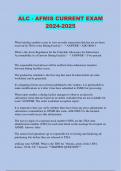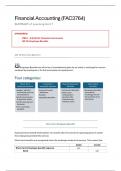Samenvatting
Summary Deep Learning (880008-M-6)
- Instelling
- Tilburg University (UVT)
Detailed summary of all lectures and additional notes, explanations and examples for the course "Deep Learning" at Tilburg University which is part of the Master Data Science and Society. Course was given by G. Saygili during the first semester, block one of the academic year 2022 / 2023 (September...
[Meer zien]













